Ruwanwelisaya (also called as Ruwanwelimahasaya, Maha Thupa, Seya, Svaṇṇamāli Mahaceti) is an iconic Buddhist stupa located in Anuradhapura, Sri Lanka. It is one of the most significant religious monuments in the country and is recognized as a symbol of Sri Lanka’s ancient Buddhist heritage.
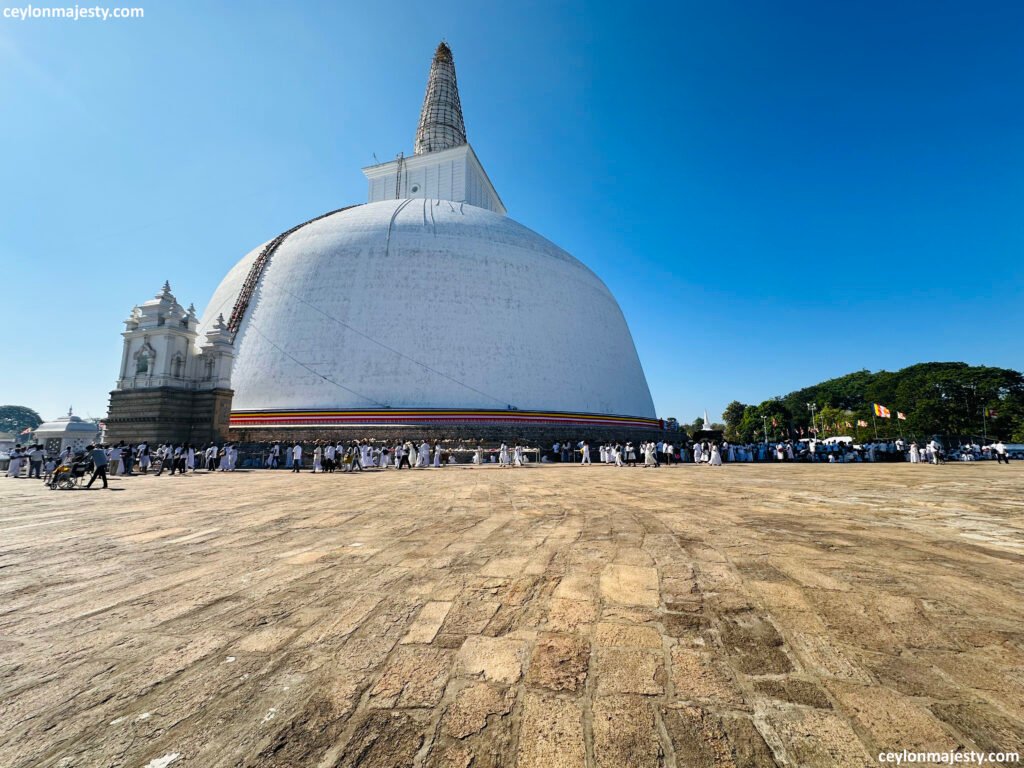
Summaried details of Ruwanwelisaya
| Factor | Details |
| Location | Anuradhapura town, Sri Lanka |
| How to visit | on foot after parking your vehicle |
| Distance from Colombo | Just over 200km, there are different routes to reach Anuradhaoura from Colombo |
| Weather | Usually hot in most part of the year |
| Built by | King Dutugemunu (161–137 BCE) |
| Height | Originally around 91 meters, later reconstructed to 103 meters. |
| Diameter | Approximately 290 meters |
| Architectural Significance | The stupa is considered one of the world’s tallest ancient monuments |
| Religious Importance | It is one of the “Solosmasthana” (16 sacred places in Sri Lanka) and a revered site for Buddhists. |
| Design | The structure is surrounded by concentric walls and is adorned with figures of elephants and other ornamental details. |
| Purpose | Built to enshrine sacred relics of the Buddha, the stupa serves as a site for worship and pilgrimage. |
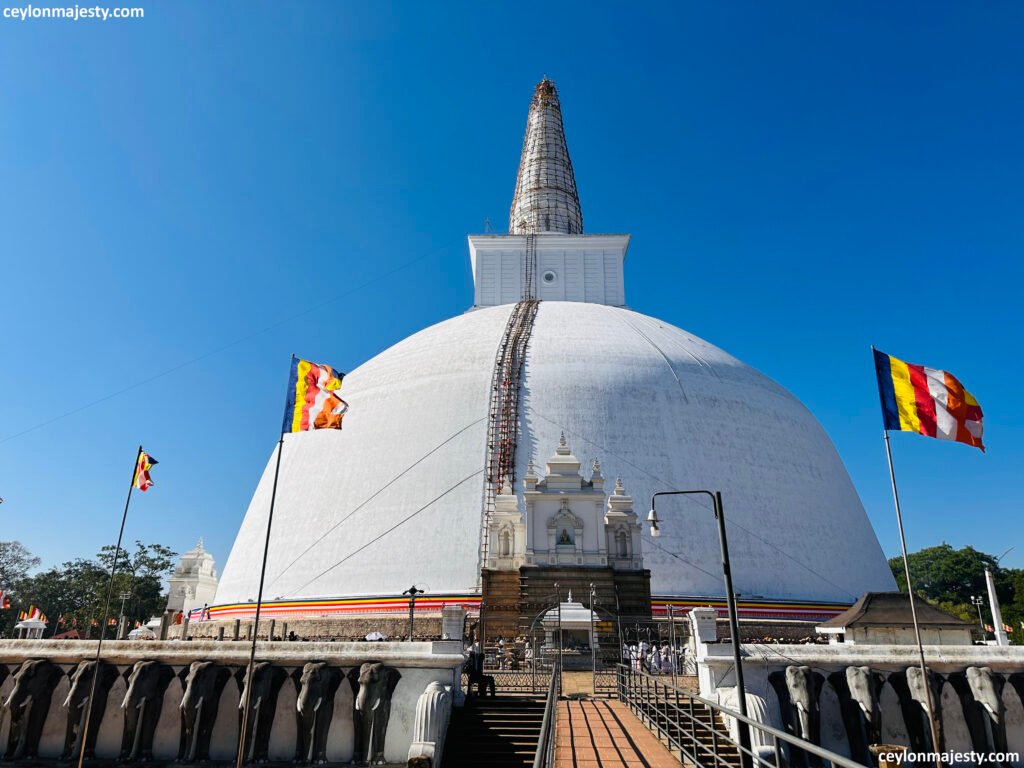
Environment around the Ruwanwelisaya
Environment of Ruwanwelisaya and its nearby area is very calm. The Ruwanwelisaya stupa is located within the main buddhist temple complex region (called as Atamasthana in Sinhala) in Sri Lanka.
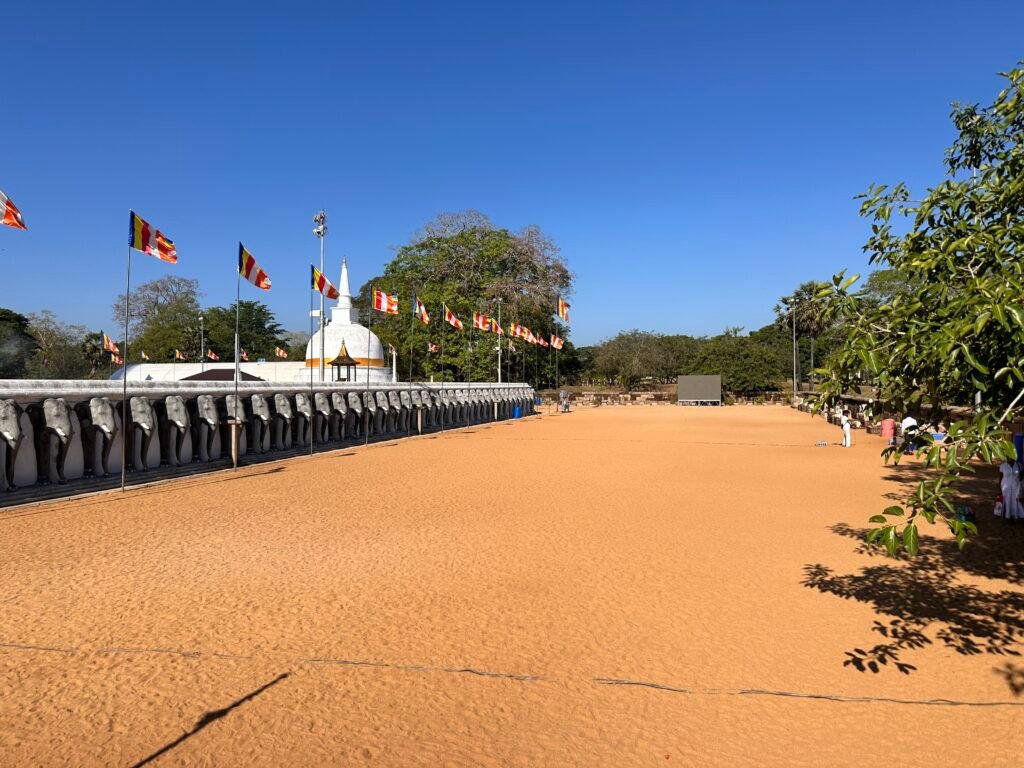
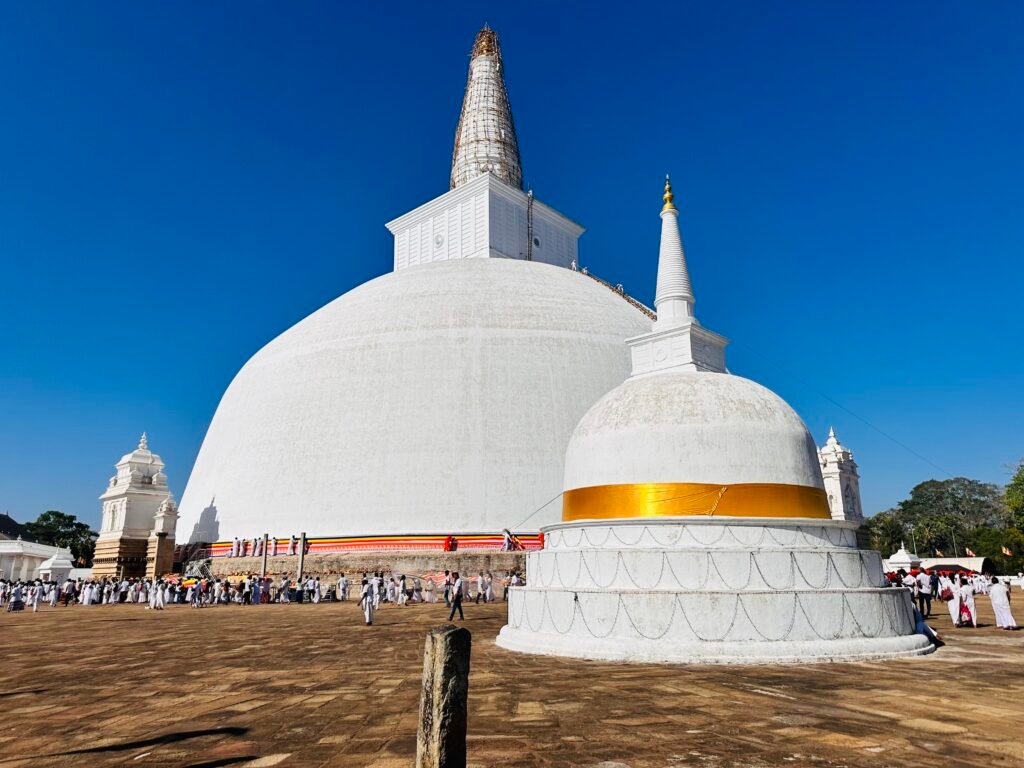
History of Ruwanwelisaya
The historical story of Ruwanwelisaya construction is a very interesting story.
History of Ruwanwelisaya in King Dutugemunu Reign Period
The Ruwanwelisaya, one of the most iconic stupas in Sri Lanka, was built by King Dutugemunu during his reign (161–137 BCE). It is located in Anuradhapura, an ancient capital of Sri Lanka, and is revered as a masterpiece of Buddhist architecture.
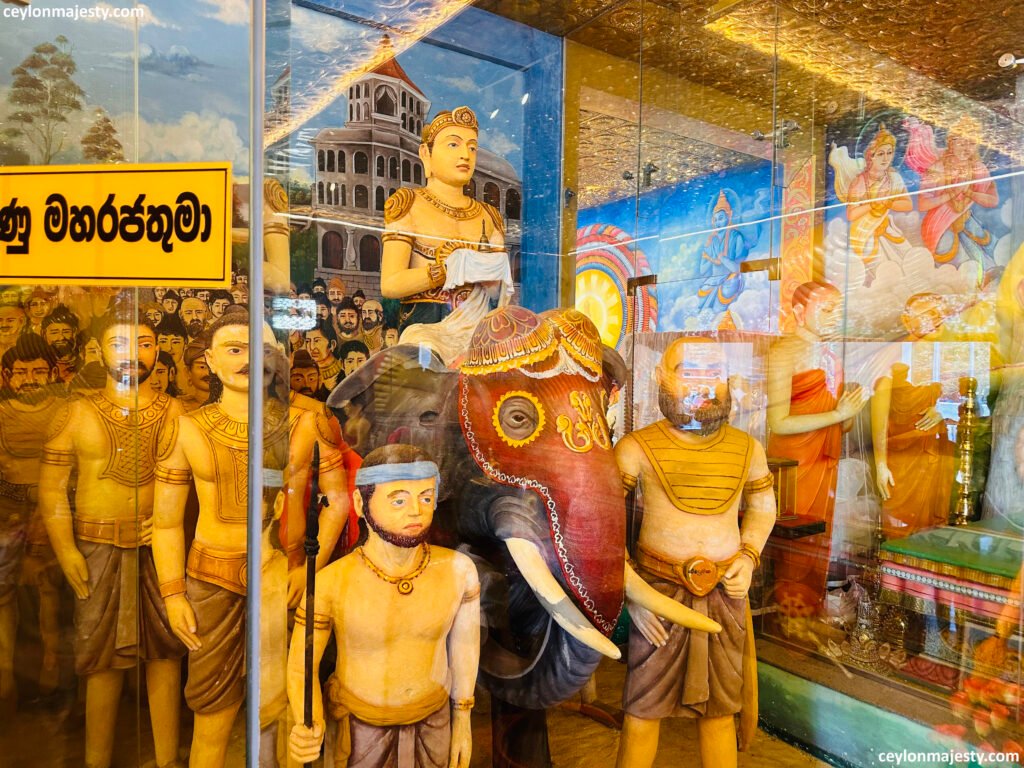
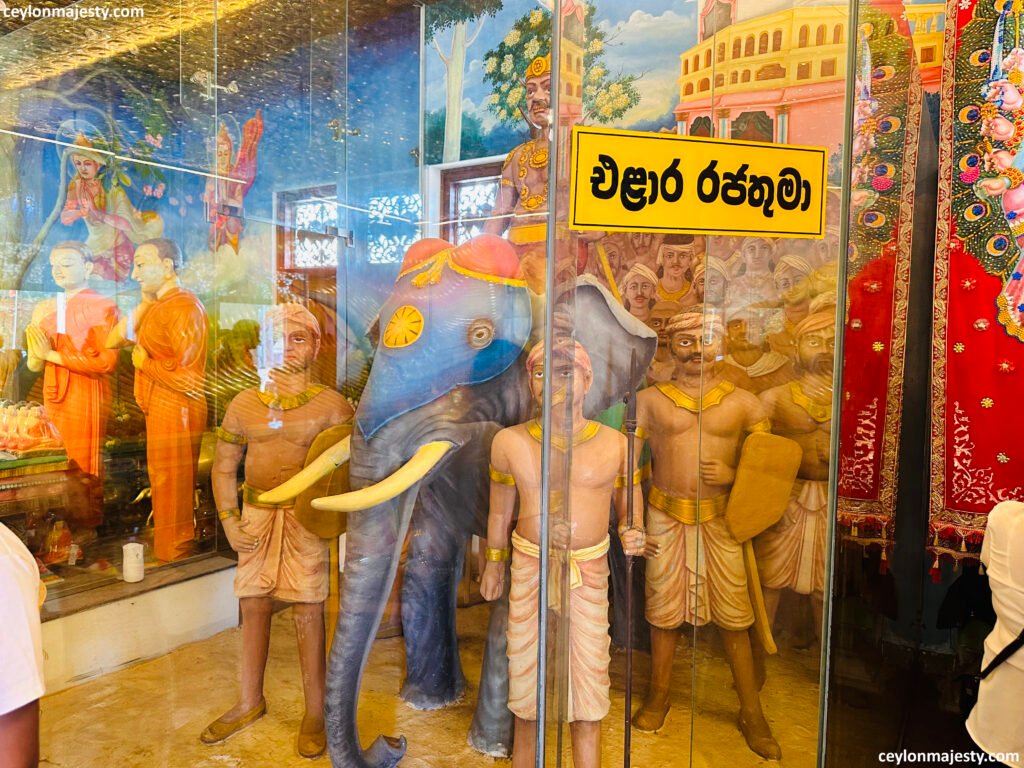
Vision and Planning:
King Dutugemunu had a deep desire to build a magnificent stupa (dagoba) to enshrine the relics of the Buddha.
He chose a location in Anuradhapura, the capital city of ancient Sri Lanka, for this grand construction.
Design
The Ruwanwelisaya was designed as a hemispherical structure, symbolizing the universe. It was envisioned to stand 400 feet high, making it one of the tallest ancient monuments in the world.
The stupa was also known as the “Mahathupa” (Great Stupa) or “Swarnamali Chaitya.”
Construction Process:
Thousands of laborers, artisans, and monks participated in the construction.
According to legends, the work was done with great devotion. Even animals were said to have contributed symbolically, such as elephants helping to transport materials.
Challenges and Completion:
The construction of such a colossal stupa required significant resources, time, and effort.
Unfortunately, King Dutugemunu fell ill before the stupa was completed. Knowing his end was near, he expressed concern about not seeing his dream fulfilled.
The story goes that his loyal ministers and monks created an illusion of completion by covering the unfinished stupa with white cloth. This allowed the king to see his vision realized before his passing.
The construction was completed by his successors, particularly his brother King Saddhatissa.
Why Ruwanwelisaya is important for buddhists?
The stupa was built as a tribute to Buddhism and to house sacred relics of the Buddha. It symbolized Dutugemunu’s devotion to Buddhism and his desire to unify the country under the Dhamma.
The site was chosen near the ancient Maha Vihara monastery, already a hub of Buddhist learning.
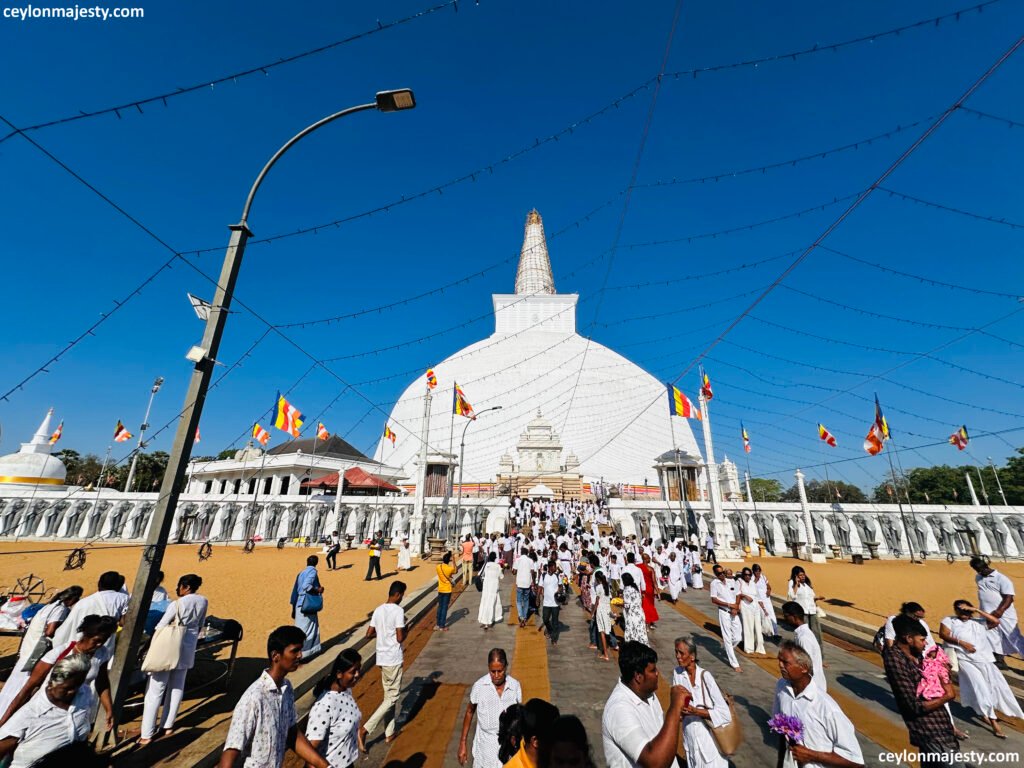
Best time to visit Ruwanwelisaya stupa
Very early morning or evening time is the best time to visit Ruwanwelisaya. In afternoon times, you will feel strong sunlight and higher temperatures.
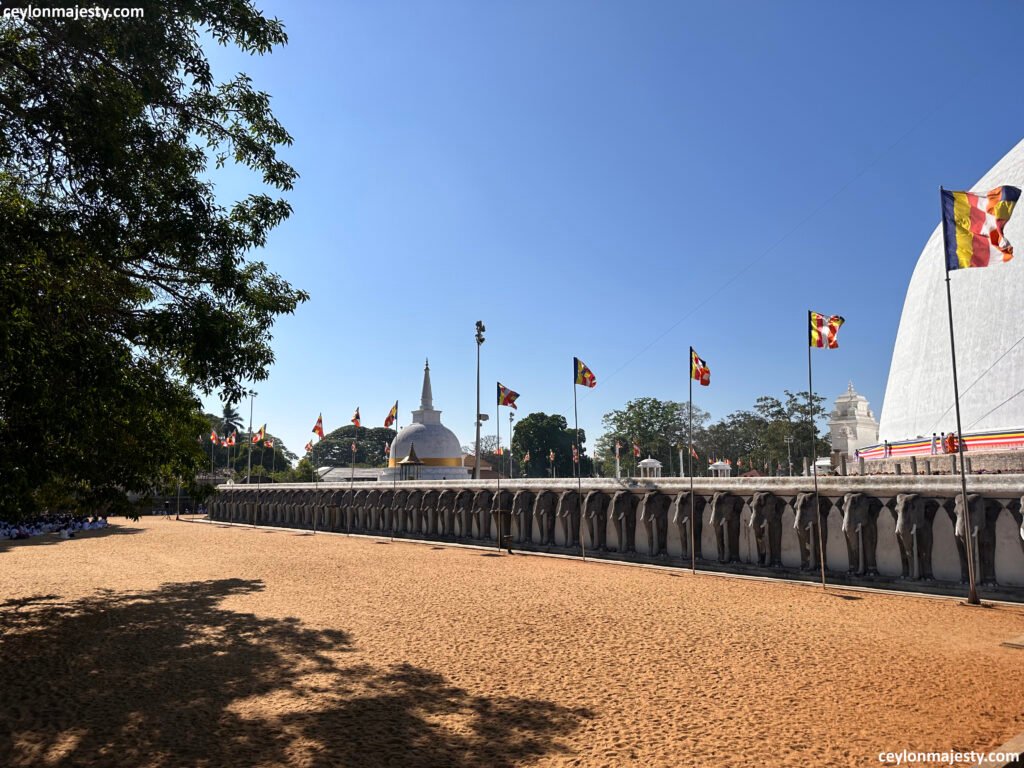
Summary
The Ruwanwelisaya is not just an architectural marvel but also a symbol of Sri Lanka’s Buddhist heritage. It enshrines sacred relics of the Buddha and is considered one of the Solosmasthana, the 16 sacred sites in Sri Lanka.
Today, the Ruwanwelisaya stands as a testament to King Dutugemunu’s devotion and is a revered site for pilgrims from around the world. It reflects the unity and resilience of ancient Sri Lanka and continues to inspire people with its historical and spiritual significance.
